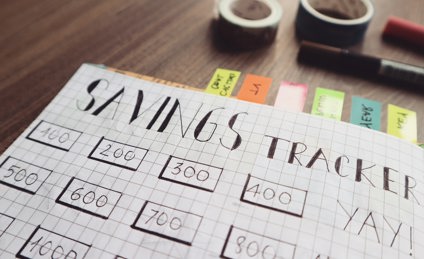
Retirement Planning: A Step-By-Step Guide to Prepare
Your retirement is the next exciting chapter of your life and should be approached with a healthy, positive mindset, after all, it’s time for you.
Regardless of when you decide to retire, you will already be thinking about spending time in the company of the ones you love, in a home that you adore, enjoying a fulfilled lifestyle.
To help you achieve this, some planning will be needed. And the more time you give yourself to prepare for retirement, the better. Putting the right plans in place in the decades, years or months leading up to retirement is key to ensuring you feel secure to step away from work. Financial independence is what retirement planning is all about.
Planning for retirement should:
- Review what size pension pot you’ll need to retire
- Help you determine whether you’re financially ready to retire, or when you will be
- Identify what your expenses are, and where you could consider cutting back
- Encourage better savings habits
- Create a roadmap from where you are today, to where you want to be
Overall, it’s a time to thrive, and following the tips we’ve picked up over 35 years of running retirement communities can help you make the most of your retirement.

Financially planning for retirement
Financial planning can help you put a plan in place to secure the retirement that works for you, and the earlier you do it, the more time you have to prepare.
1. Track down any lost pensions
There are easy ways to find pensions you’ve lost track of. Once you’ve found all you can account for, consolidate them into one pot by transferring them into your workplace or private pension.
Just be mindful that if this contribution pushes your total annual pension contributions over £40,000, you’ll likely need to pay tax on it.
2. Work out how much you’ll retire with
Now it’s time to work out how much you’ll have in total when you come to retire, from your personal pension to any investments or general savings. For UK residents, you can work out how much pension you’ll receive by:
- Checking your State Pension forecast, as well as the amount in your private and workplace pensions
- Adding in your savings and investments
- Subtracting your 25% lump sum (if you want to take it)
- Dividing this total by the number of years you want your pension to last
There are some great online calculators, like Money Helper’s, which will work this out for you.
3. Work out how much you’ll need
Whether you want to be travelling a lot, running a car, continuing with the fine wine subscription or starting a few fitness classes, sit down and your calculate monthly expenses.
It may seem daunting, but it will show you how much you’ll need in your pension pot in order to retire. Be sure to account for inflation - the government’s 2% inflation target is often used for this.
Your pattern of income may change when you retire. While some expenses will lower, such as mileage from commuting, others will increase as you fill your free time. Consider this when planning how much you’ll need.
Make sure to think about:
- Pension tax
- Nonessentials like holidays, clothes and meals out
4. Consider ways to boost your pension
So, you’ve got all the facts and figures in front of you now. If what you’ll have in retirement won’t cover what you’ll need, that’s OK.
This is why we encourage planning your retirement in advance. Now that you know how much you’ll need, you can consider topping up your pension with a lump sum, or increasing your monthly contributions to help you get to where you need to be.
5. Clean up your finances
One of the best ways to prepare your finances for retirement is to clear your debts.
Review how much you owe across your mortgage, loans and credits alongside the rates of interest on each to prioritise the most efficient way to pay down any debts. Asset sales may be a good way to pay them down.
Depending on your debts, you may want to consult a professional on how best to tackle them. You can find free debt advice with MoneyHelper.

6. Assess your investments
Moving towards retirement may mean changing up your portfolio.
Often, investments made in your 20s, 30s and 40s are riskier. Revisit your portfolio to address whether you’d prefer to move your funds to lower-risk securities.
You may even choose to purchase securities that pay dividends so you can continue to receive a regular income after employment.
7. Decide between renting or owning
For many people who’ve worked hard to buy a property and perhaps even paid off the mortgage, renting can feel like a step back.
However, renting in retirement can be a great option for some. It helps to provide financial and logistical flexibility. You’re not tied down and can free up funds for helping out family members, taking a long-desired trip or otherwise. Take some time to think about whether you’d prefer to rent or own in retirement.
8. Consider professional financial advice
At the end of the day, seeking professional advice can help you achieve the retirement plan you want. You can use money from your pension to help fund a financial adviser up to three times yearly, without a tax charge.
Here are some resources to help you find the right financial advice:
Glossary
Many people accumulate pension contributions across decades of work, only sitting down to review them when they’re looking to retire in the next few years. That may mean people aren’t familiar with a lot of the terminology used when it comes to planning for retirement.
Hopefully, our glossary can help you better understand some of the typical retirement phrases so you can plan yours with more confidence.
Annuity
A pension annuity is a product you can buy with your pension when you reach 55. It pays you a regular income monthly, quarterly, bi-annually or annually. You can choose to have an annuity paid over a set period of time, or for the rest of your life.
It is subject to income tax, but providers usually deduct this before you are paid.
Defined benefit
A defined benefit pension is sometimes called a ‘final salary’ or ‘career average’ pension. It is a workplace pension that offers guaranteed retirement income.
Defined benefit pensions are calculated based on the number of years in the scheme, your earnings and the scheme’s accrual rate. For information specific to your pension, speak to your employer.
They are usually now only seen in older workplace plans or public sector schemes.
Defined contribution
Sometimes known as ‘money purchase’ schemes, this type of pension is the accumulation of money contributed by you and your employer, as well as the investment’s growth.
A defined contribution pension can be workplace or personal.
Drawdown
Similar to an annuity, a pension drawdown provides a regular retirement income. However, unlike an annuity, you do not use your entire pension to buy a drawdown. Instead, it remains invested so it can continue to grow while you take regular payments from it.
Lifetime allowance
This is the limit you can pay into your pension without your contributions being subject to tax. The current lifetime allowance is £1,073,100. This figure is frozen until April 2025.
Self-invested personal pension (SIPP)
A SIPP is a private pension plan, but instead of having your securities picked by a fund manager, you choose your investments.
Tax-free lump sum
When you come to use your pension, you can withdraw 25% of it as a lump sum and you won’t be taxed on it.
Uncrystallised pension
These are your untouched pension savings.

Hopefully you’re now feeling more in control of your retirement plans and know what you need to do to prepare for later life.
Find out more by visiting one of our open days and talking to the team.
